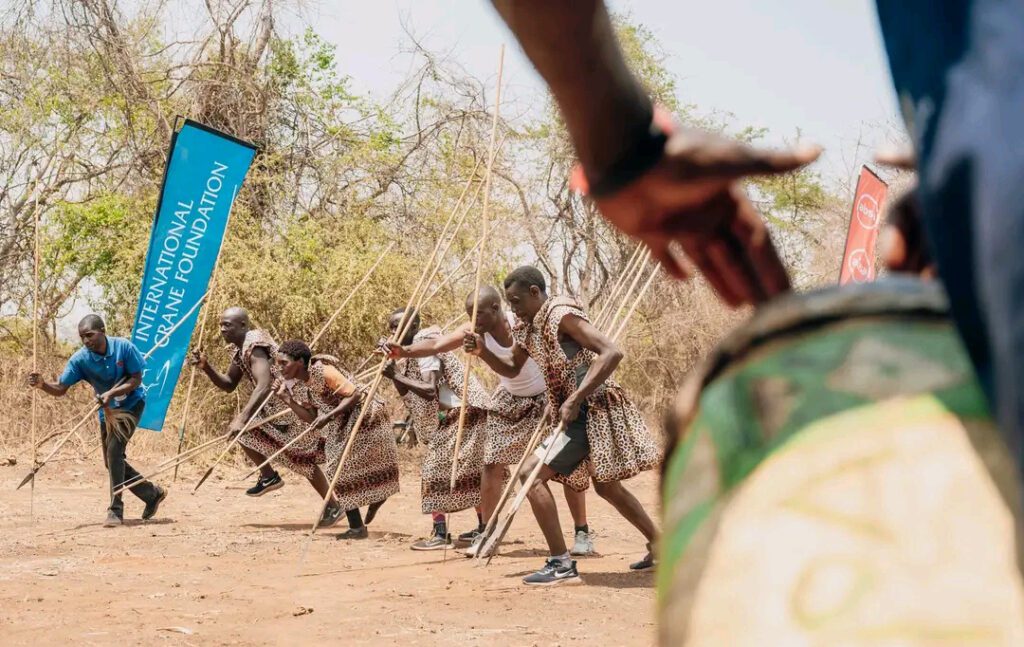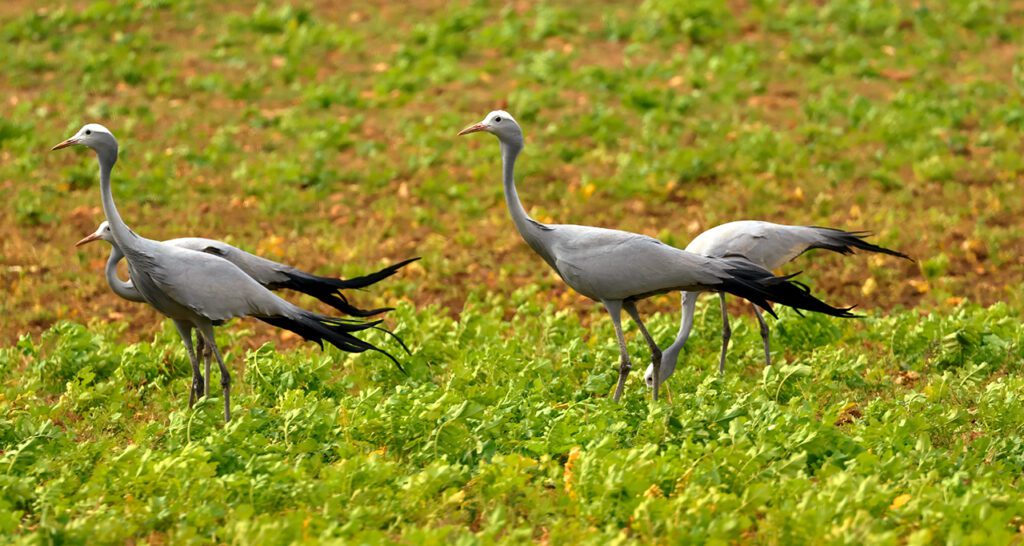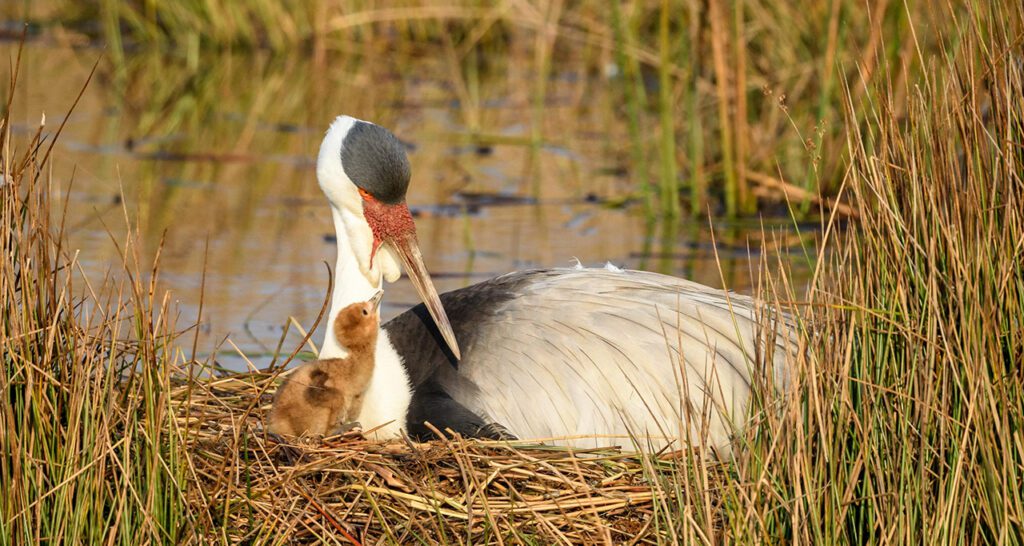A Field Mission to Track and Protect Wattled and Grey Crowned Cranes in Zambia’s Wetlands
Surveys conducted in the Liuwa Plains National Park, Barotse Floodplains, and Busanga Plains
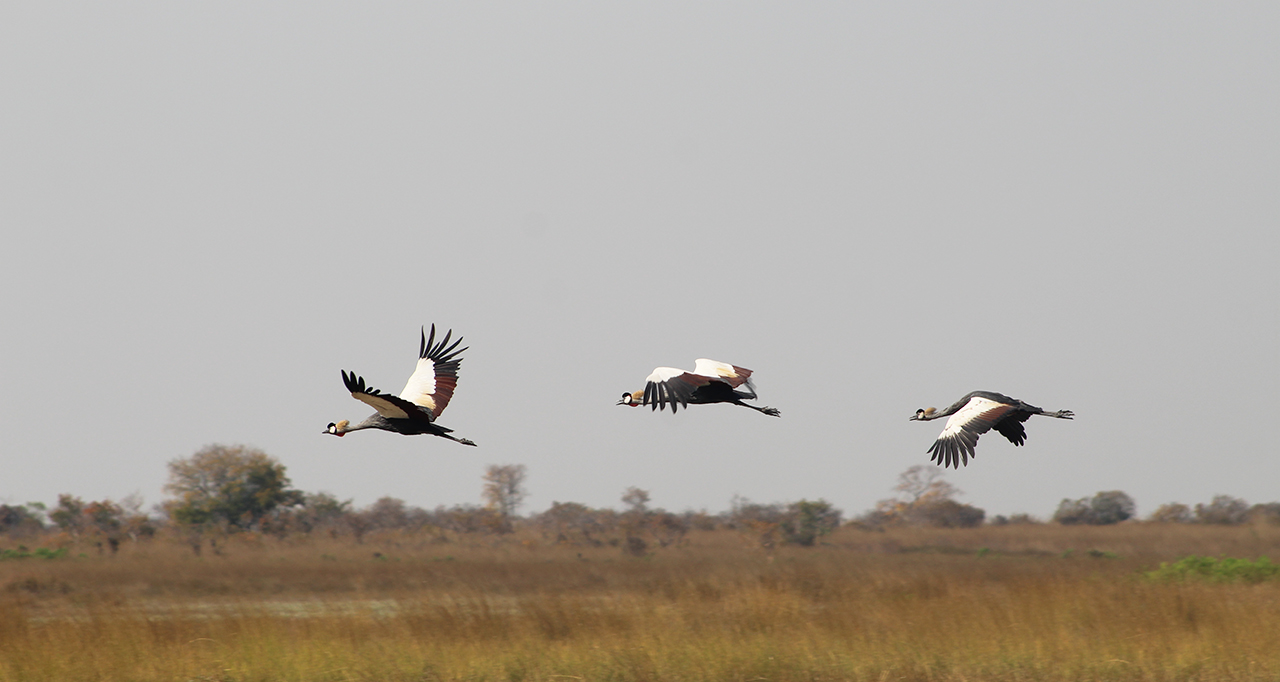
Zambia holds a special place in global crane conservation. The country hosts more than half of the world’s Vulnerable Wattled Crane (Bugeranus carunculatus) population, alongside the Endangered Grey Crowned Crane (Balearica regulorum). These iconic birds depend on vast wetlands such as the Kafue Flats, Bangweulu Wetlands, Liuwa Plain National Park, Busanga Swamps, and Barotse Floodplains for their survival.
Between August 29 and September 5, our team, working with BirdWatch Zambia, conducted a survey to assess the populations of Wattled and Grey Crowned Cranes in Liuwa Plains National Park, the Barotse Floodplains, and the Busanga Plains. This fieldwork aimed to assess the crane populations and evaluate breeding, roosting sites, distribution, and habitat conditions. This research is part of a broader effort for planned satellite tagging and long-term monitoring of cranes in Zambia.
The survey aimed not only to track population numbers but also to evaluate breeding activity, feeding sites, and habitat conditions—critical information for guiding conservation action.
The survey team records a Wattle Crane nest with an egg in the Liuwa Plains National Park. International Crane Foundation photo
Methodology
The team used systematic transect drives combined with real-time digital data collection through Survey123. Driving slowly between 20–40 km/h, they stopped at every water pool, scanning with binoculars and logging sightings on the app. This approach allowed efficient and accurate recording while adapting to the dry conditions that concentrated cranes around scarce water sources.
During the two days of extensive surveys in Liuwa Plains National Park, the team covered the southern part of the park, focusing on hotspots for Wattled Cranes, which are typically around the water pans. These include Kings Pool, Namonda Pools, Matamanene, Luambi, Siwamutelo, and Four Trees.
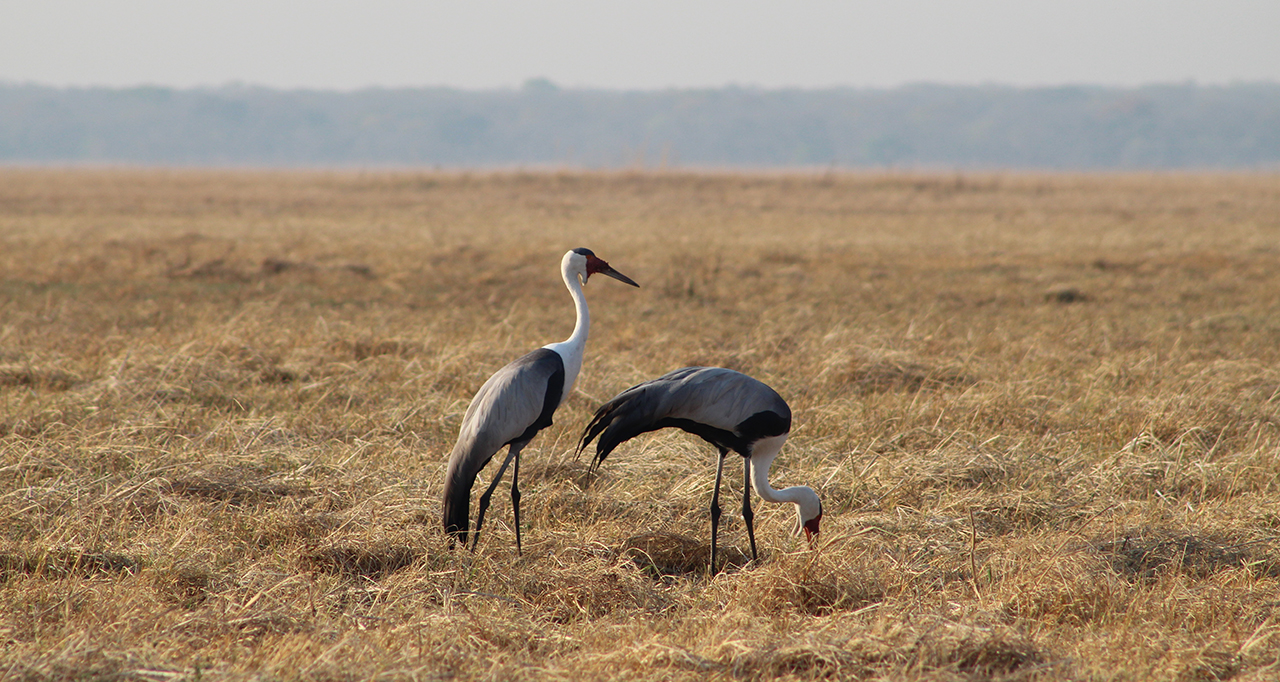
Top and above: A trio of Grey Crowned Cranes and a Wattled Crane pair spotted during the surveys. International Crane Foundation photos
Findings
Liuwa Plains National Park
- 108 Wattled Cranes were recorded, including six pairs, one family, and five flocks. The largest flock (60 birds) was seen around the Matamanene area.
- 361 Grey Crowned Cranes were observed, with 10 families, seven pairs, and 12 flocks, the largest numbering 78 individuals.
- Most significantly, breeding activity was confirmed in Liuwa: A Wattled Crane nest with an egg, a pair with a chick, and several Grey Crowned Crane families with juveniles and chicks. This is encouraging, given that recent droughts have affected breeding on the Kafue Flats. In Zambia, Wattled Cranes’ peak breeding period is between May and August, and for Grey-Crowned Cranes, it is between December and March. The high number of breeding Grey Crowned Cranes and the two pairs of Wattled Cranes breeding indicate the possibility that both species are adapting to the challenging environmental conditions and breeding only when conditions are more conducive. This also shows how important the Liuwa plain is for the conservation of both species
Barotse Floodplains
Although the World Wildlife Fund for Nature in Zambia reported a flock of over 40 Wattled Cranes (with photographic evidence) along the Mongu-Kalabo Road, the survey team didn’t see any cranes during their visit to the Barotse Floodplains. It is highly likely that this flock had migrated deeper into the floodplains or moved toward Liuwa at the time of the survey in Barotse.
Busanga Plains
Surveys in the Northern part of Kafue National Park in Busanga plains covered Kasonso Busanga, Mukambi, Kapinga, Kasompe, Kingupengu, Masozhi, Shumba, and Lufupa. The dry landscapes and widespread fires had reduced crane sightings as these conditions weren’t favorable for them. In total,
- 26 Wattled Cranes were recorded (six pairs, three families, one flock, and one lone bird).
- 44 Grey Crowned Cranes were observed, including families with chicks.
Local accounts from tour guides and wildlife police officers confirmed that large flocks have become rare, with drought and fires likely disrupting feeding and nesting. Interestingly, these Wattled Cranes in this area showed unusually short flight distances, allowing observers to approach within 20 meters, most likely due to local habituation because of the high tourism activities.
Zambia’s large wetlands are not only landscapes of immense beauty but also biodiversity hotspots for a diversity of species, including globally threatened cranes like Wattled and Grey Crowned Cranes. Despite harsh environmental conditions, such as unplanned wildfires, shrinking water pools, and anthropogenic activities such as fishing and reed harvesting, among others, which impact the habitat and the species, the surveys revealed interesting findings. Wattled Cranes and Grey Crowned Cranes were recorded with juveniles, an indication that the species are breeding. For Wattled Cranes, an active nest with an egg was recorded, indicating that the species is adapting to challenging environmental conditions by breeding later in the year, when there is less competition for resources. With continued monitoring, collaboration, and conservation action, Zambia can secure its role as a global sanctuary for cranes.

